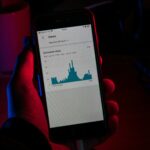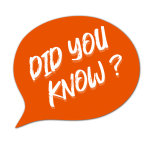Champagne stands for celebration, yet the path from shelf to glass often decides how a drinker feels about the bottle long before the first pour. Design choices signal quality, set expectations, and help people learn about styles. Producers now think beyond labels to the entire experience: how a bottle looks online, how it arrives, how guests learn, and how a house voice reaches new drinkers without losing heritage. This focus sits at the intersection of design, culture, and technology, and it yields practical gains for both buyers and brands.
Packaging as a promise
A magnum Champagne bottle must be strong enough to hold pressure and gentle enough to pour. Within those limits, houses use shape, color, and texture to communicate identity. Darker glass protects the wine from light. Foil color hints at a cuvée’s style. Typography signals whether a house leans classic or modern. The punt, label stock, and closure all add tactile cues. Good design avoids clutter. It shows the name, the style—brut, extra brut, or brut nature—and the house story in a few lines. A clean label respects the buyer’s time and reduces confusion at the shelf.
Unboxing and the first impression
The moment a bottle arrives can heighten anticipation. Lightweight shippers made of recycled material protect the wine while lowering footprint. Inserts can guide storage and serving temperature without turning into a booklet. Some producers print disgorgement dates, dosage levels, and time on lees on the back label. That transparency helps buyers pick a bottle that fits their taste and meal plan. The first touch should be calm and confident rather than flashy; Champagne does not need a show to prove itself.
From chalk cellars to the glass in your hand
Storytelling works when it connects method to flavor. Tours that show presses, riddling racks, and chalk cellars help visitors link brioche notes to lees aging and fine bubbles to patient second fermentation. Not everyone can visit in person, so many houses now offer virtual tastings hosted by educators. They ship a tasting set, then lead a guided session where guests learn how chardonnay differs from pinot noir, why dosage matters, and how glass shape changes aroma. Clear, factual language respects both newcomers and enthusiasts.
Augmented reality as a learning tool
Labels can now trigger a phone experience that shows vineyard maps, harvest timelines, and food pairing ideas. The goal is not spectacle. It is context. A simple animation can mark where a parcel sits on the slope, why chalk matters for drainage, and how that geology relates to the wine’s structure. A short clip can show the proper way to open a bottle with a gentle sigh rather than a pop. Guests leave with practical knowledge rather than a marketing slogan.
Online retail with human cues
Buying Champagne online introduces friction because buyers cannot handle the bottle or smell the wine. Retailers reduce friction by using clear filters for style, grape blend, dosage range in g/L, and aging notes. Short, consistent descriptions help buyers compare options side by side. High-resolution images of the back label let people see technical data. Some platforms include a short video from the cellar master explaining the cuvée in plain language. Those touches rebuild the human side of a purchase made through a screen.
Service design at restaurants and bars
Menus that group Champagne by style rather than brand can guide guests who feel lost in long lists. Staff training that covers opening technique, ideal temperature, and basic pairing advice keeps service smooth. Glassware policy matters as well. White wine stems for by-the-glass service allow a broader set of aromas and suit the table experience. Half bottles give smaller groups access, while magnums support larger gatherings. Thoughtful service design supports the wine’s strengths without fuss.
Accessibility for more people
Design can welcome more guests to the category. Clear label text and color contrast help those with limited vision. Videos with captions serve people with hearing loss. Simple, nonjudgmental language invites first-time buyers who want guidance without jargon. Producers who publish dosage and disgorgement dates reach drinkers who care about technical details, while others appreciate food pairing charts that speak in recipes rather than obscure tasting notes. Both needs can be met without talking down to anyone.
A steady arc from promise to pour
The Champagne experience begins long before a cork loosens. It starts with a bottle on a shelf or a photo on a screen, continues through an unboxing and a pour, and ends in the memory of a shared toast. Good design at each step supports what the wine already does well: clarity, freshness, and a sense of occasion. Technology adds tools that inform rather than distract. The result is simple and satisfying. People feel confident choosing, serving, and enjoying Champagne—and that confidence turns first purchases into long relationships with the houses they trust.





















Follow Us!